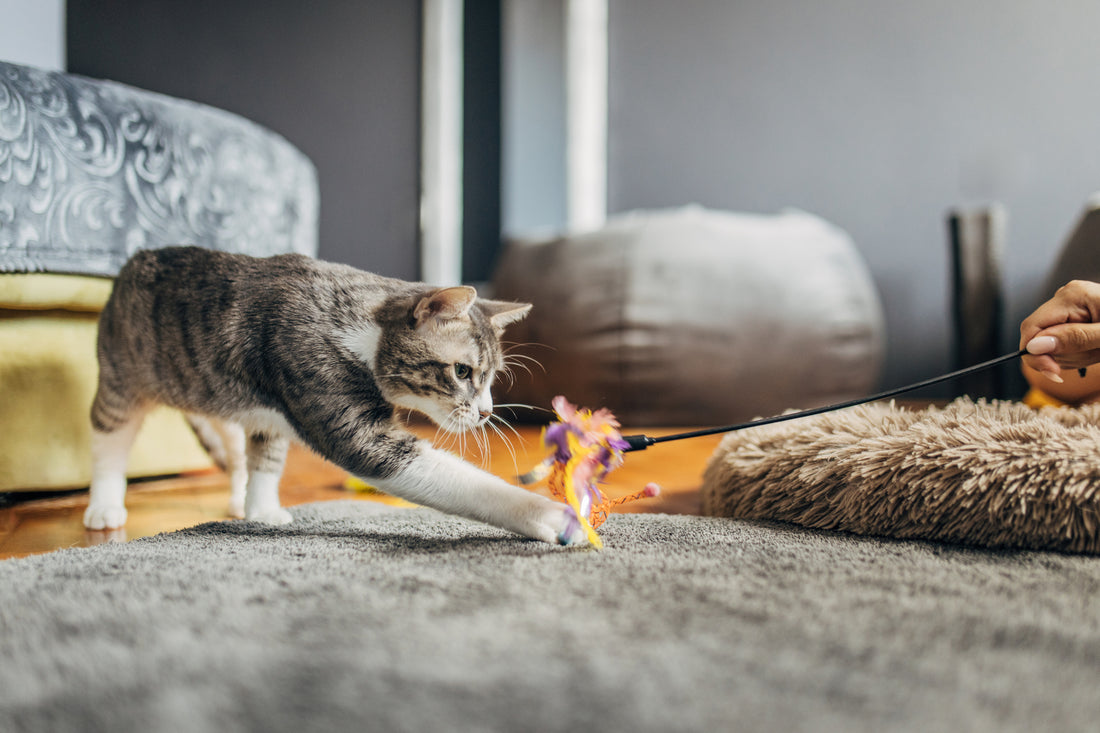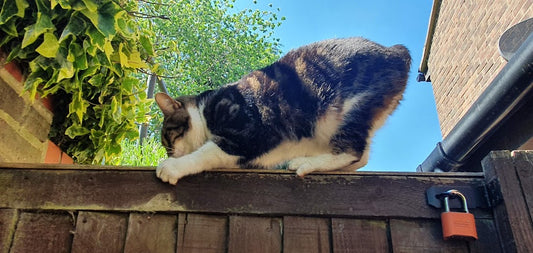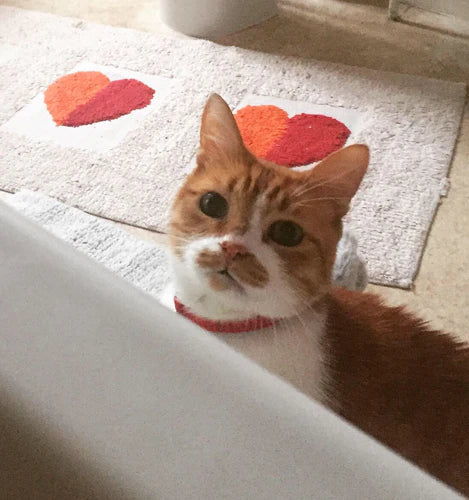Just like in humans, exercise is vital to your fabulous feline's physical and mental well-being. We know we should be keeping active and hitting that step count, and for all the same reasons, your cat should stay active, too—even if they have slowed down or are feeling stiff.
So, how can you help your cat to stay active, especially if they live indoors or during the winter months? And what activities should you avoid?
How much exercise does my cat need?
On average, cats need around 30 minutes of exercise daily…but they love to be lazy! One study found that only about 36% of cat owners exercise their cats regularly, and most cats won’t go out of their way to get a wiggle on. Kittens might need more exercise to burn off that baby energy, but even older cats with joint stiffness should aim for 20-30 minutes of exercise daily.
What are the benefits of exercise for my cat?
Improving joint health
Many of the benefits of exercise feed into this one—maintaining a healthy weight, flexibility and range of motion. But, in particular, exercise supports your cat’s joint health. Even if your cat is older, exercising will help to keep their joints healthy. Exercise increases the amount of synovial fluid in the joint capsule (between two bones). Even if there is damage to the cartilage in the joints, an increase in synovial fluid improves the lubrication between the joints, making movement more comfortable.
Avoiding Obesity
Obesity is associated with many health problems in both us and our cats. Various studies have estimated that 50% of all cats are overweight. Regularly exercising your cat helps maintain a healthy weight, potentially improving a whole range of health conditions.
Improving muscle strength
Exercise strengthens the muscles around the joints, meaning they can provide better support, reducing the risk of injuries.
Maintaining flexibility and range of motion
When muscles aren’t working, they stiffen up. Exercise maintains healthy muscles, allowing your cat to stay flexible with a good range of motion in their joints.
Reducing stress
As with us, exercise releases endorphins—happy hormones. Cats are very susceptible to stress; exercise can help combat this, improve their mental state and keep them purring.
6 ways to exercise your cat with joint problems
Ok, so how do we get them off the sofa, out of their sunbathing spot and on the move? Here are a few ideas for getting your cat exercising.
Feather wand/fishing toys
These are a fab way to get your cat moving and stretching. And cats LOVE them, as there is a “catch” reward that mimics hunting. Try to avoid going so high that they have to jump, and try not to cause very rapid twisting movements.
Puzzle games
Puzzle feeders or treat balls keep your cat’s brain whirring but also get them up and moving around as they figure out how to get their scrummy snack!
Scatter feeding
Simply scatter their food around the floor so they have to walk about to get it. This isn’t easy if they’re not dry-fed, but you could do it with treats or multiple small bowls. Just don’t go over their recommended daily intake…they don’t need extra calories on the waistline.
A scratching post or cat tower.
Cat towers are great at encouraging climbing, jumping and being active. (Plus, it’s a perfect spot to swipe you from as you walk past.) And, scratching posts encourage some lovely deep stretches as they reach up to sharpen those claws. Fabulous for improving their range of motion and flexibility.
Box and tunnel play
Cats can’t resist a box. Buy them a lovely new toy? They’ll have the box, thanks.
Boxes and tunnels encourage stalking and pouncing behaviours. You could even hide toys or treats for them to find.
Bubble popping
This is a really simple but fun activity. Blow some bubbles and watch your cat chase and pop them. You can even buy flavoured bubbles from pet retailers for delicious fun!
Toys & activities to avoid when exercising your cat
Try all sorts of toys and games to encourage your cat to move, particularly if they’ve slowed down and are feeling stiff—but here are a few to avoid.
The TV would suggest cats love a ball of wool, but the loose strands can get caught in their claws or tangled around them. Plus, if they swallow them, it can cause a serious blockage, potentially even resulting in surgery.
Cats go mad for a laser pointer, and we’ve all seen videos of them playing “catch” games on tablets or phones. But these activities are super frustrating for our cats because they never get a reward. There is no catch at the end—no physical prey, which can be damaging to your cat's mental well-being.
Slippery floors are awful if your cat already has joint stiffness. Encouraging them to zoom around and play on these floors can be disastrous. Try to restrict play to the carpet, a rug, or even throw down a blanket. Anything to help prevent slides, slips, and twists.
Go and have some fun!
Not only is exercise fantastic for your cat’s physical and mental health, not to mention their joint health and mobility—but it's fun. Play is a fantastic way to bond with your cat and show them you’re the fun pawrent!
Go and enjoy getting mobile!








